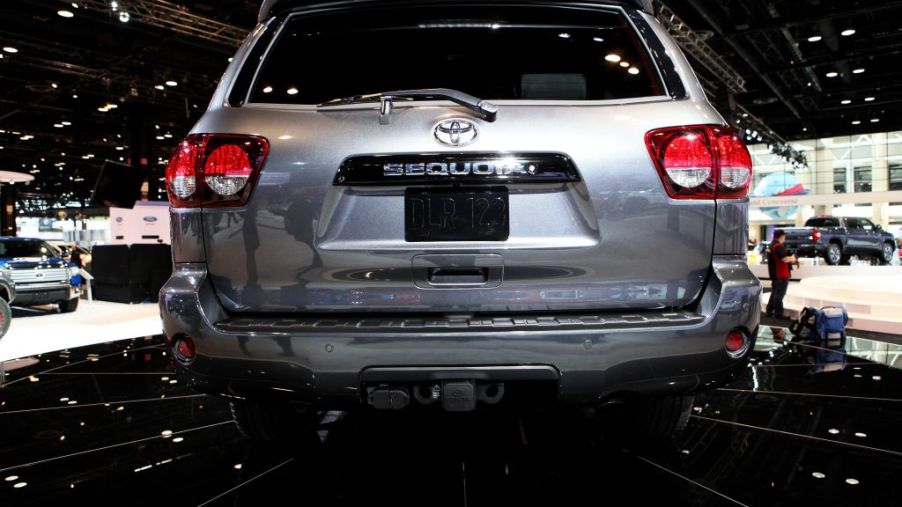
What Are the Most Common Toyota Sequoia Problems Owners Face?
Trying to decide whether to buy new or used can be a bit of a headache. On one hand, the security of having a warranty for any needed repairs is very reassuring, and there are few things sweeter than the smell of a brand new car. On the other hand, used vehicles are often reliable if the original owner has kept up with the maintenance, and you don’t have to worry about high car payments.
So which is better? A new Sequoia fresh from the dealership or a used model that has been pampered by a loving owner? Used Sequoias are often considered to be some of the best SUVs on the market, but Car Complaints reports that there are three problems that you need to be aware of.
Transmission failure in earlier Toyota Sequoias
The transmission is one of the most important parts of a vehicle, and when it gets messed up, it’s rarely a cheap fix. That’s why so many owners of the 2002 Toyota Sequoia were fed up with all the problems caused by this one part.
The average repair cost is $3,510, although some owners report that it cost them over $4,000. The 2002 Toyota Sequoia usually began to have transmission problems around 97,250 miles.
The only real solution is having the transmission replaced. For owners who bought the Sequoia believing it was going to be a reliable vehicle were highly disappointed.
One owner reported,
“We spent so much money purchasing this sequoia thinking it would at least last us another 10 more years. We are so disheartened and disappointed with the quality of vehicles Toyota has put out during this past decade.”
The 2002 Toyota Sequoia has lots of problems, but the transmission is the worst overall. It received a lot of good reviews from Edmunds, but if you’re looking at a 2002 Sequoia, check out the CarFax report before signing on the dotted line.
VSC traction control
Some of the worst problems on a vehicle are the ones that have no known solution, and that seems to be the general consensus for the 2001 Toyota Sequoia. It has a VSC traction control system that engages for no apparent reason, and has many owners terrified of driving their own vehicle.
Owners report that it would come on when traveling at higher speeds. The Sequoia would begin to shake, shift to the right, the brakes would become activated, and begin to make a loud grinding sound.
An irate owner said,
“While driving at various speeds my VSC lights come on and my vehicle jerks to the right for absolutely no reason and no warning. This is TERRIFYING. I cannot believe Toyota has never issued a recall on this major problem and shame on them. If someone gets killed over this I hope they are put out of business.”
Two owners reported that removing the vsc/anti-lock brake fuse seemed to make a difference. This cost them around $1,300. Other owners never found a solution. The average mileage that the VSC traction control began to malfunction was around 135,300 miles.
It’s interesting to note that 100% of drivers on Cars.com would recommend buying the 2001 Toyota Sequoia. Only 17 people reviewed, so it might be wise to check out other review sites if you are interested in the 2001 Sequoia.
VSC traction light comes on
The third most reported problem for the Toyota Sequoia was pretty much the same as the second, which is the VSC traction system. This problem was reported on the 2003 Sequoia, and cost around $1,120 to repair. The average mileage when the VSC light began to come on was 78,000 miles.
Should you write off all Toyota Sequoias?
While the problems might sound severe, the Toyota Sequoia has come a long way in recent years. Most of these problems happened over two decades over, and the recent models aren’t plagued by these problems. Like all vehicles, the 2020 Sequoia has its share of quirks that may turn some potential owners away, but overall, it seems to be worth checking out.
One of the biggest complaints from U.S. News is that the 2020 Toyota Sequoia is that it isn’t as modern as many of its competitors. If this doesn’t bother you, then the Sequoia might be exactly what you’re looking for.


